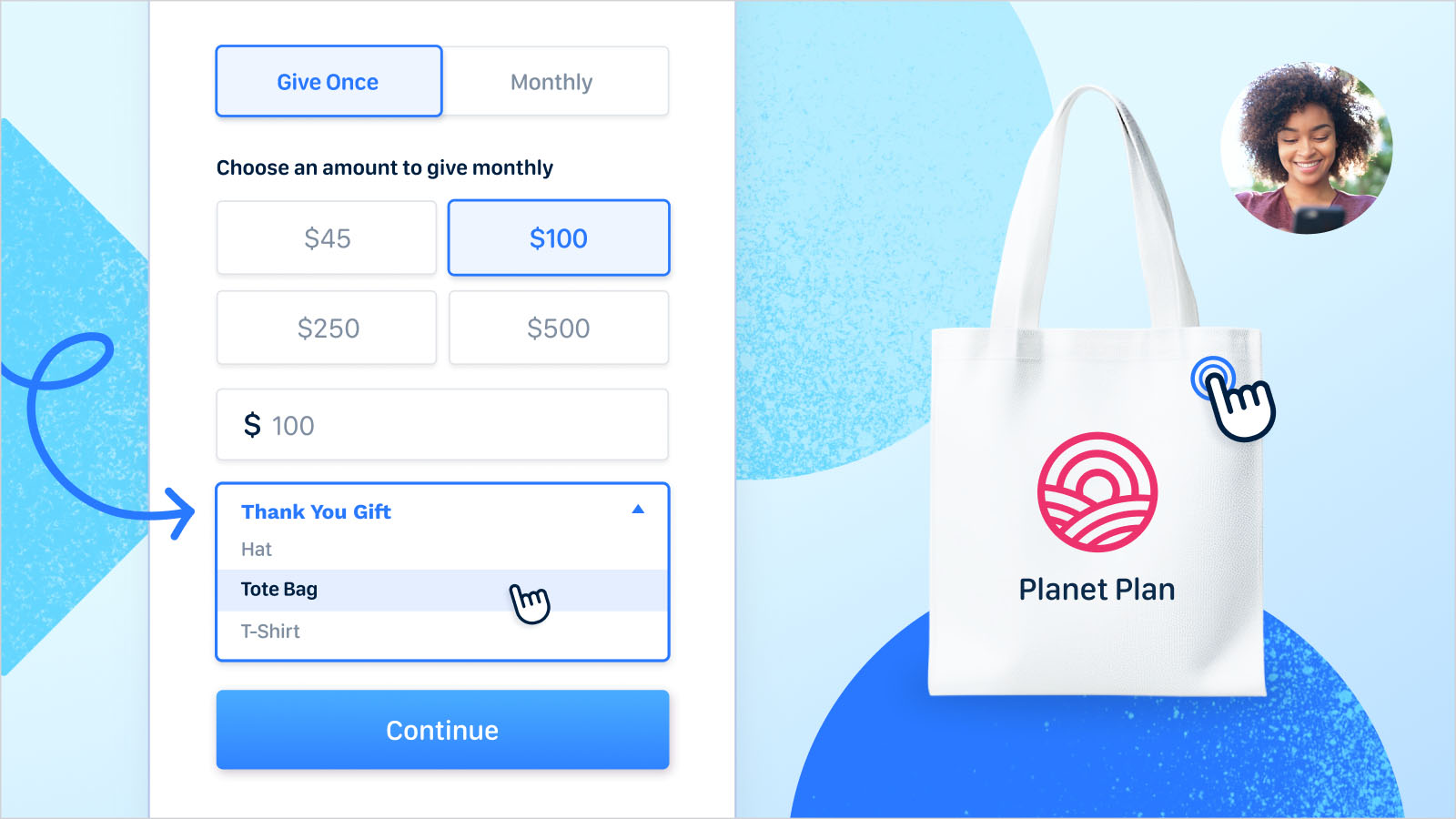Howdy nonprofiteers! Are you hearing a lot about brand lately? Yeah, us, too.
Nonprofit Branding Basics
Let's start with the basics—what does branding even mean, bro? We turned to the pros at Brandingmag who shared this helpful definition: “Branding, by definition, is a marketing practice in which a company creates a name, symbol or design that is easily identifiable as belonging to the company. This helps to identify a product and distinguish it from other products and services.”
So, what exactly does that mean for nonprofits?
Well, we're operating in a space of more than 1.5 million nonprofits in the U.S. alone. Nonprofits need beneficiaries, donors, advocates, and other constituents to be able to distinguish themselves from all the others. Being distinguishable means that you can help more people, raise more awareness, and raise more money. Sounds pretty darn good, right?
Unfortunately, for a lot of nonprofits branding starts and stops with visual identity. Think logo, color scheme, and tagline. But branding is so much more than that! If you think about some of the most distinguishable nonprofits out there, it’s way more than their logo and color scheme that makes them stand out.
Let’s talk about how you can go about developing your own brand voice. Kristi, take it away.
Wouldn’t it be great if your donors gave you more money? And new donors were easier to attract and engage?
It’s the dream of every nonprofit. Yet, sometimes I wonder if we make it too hard for them.
Or—gasp—even blame them when fundraising gets difficult. Instead of trying every trick under the sun to nab a donation, or worse, throwing our hands up altogether, what if we had a frank conversation with ourselves? That’s right, the old, “It’s not you, it’s me” conversation.
There will certainly be times when donors change their giving priorities, don’t connect with the mission, or the timing is just off, but there are other times when it’s possible that we confuse them with our message or don’t give them a clear plan to act. We can’t control what they do, but we can certainly control what we put out into the ether.
So, what’s the best way to help donors understand and respond to your needs?
I’ll give you a tip. A shortcut. A tool.
It’s called a brand voice guide.
What is a brand voice guide, and why do I need one?
In its simplest terms, a brand voice guide is a document that outlines who you are, your main messages, what makes you unique, who your audience is and their needs, and how to communicate with them. It can get a lot fancier, but those are some of the core elements.
When you have a brand voice guide, you and your team are on the same page. Not only are you in step, but your donors (and potential donors) are in the loop, too. You can communicate in a way that’s clear, consistent, and compelling, and remove any guesswork for your audience.
Without a brand voice guide, you leave communication to chance. Team members are left to talk about whatever is important to them, and donors could misunderstand your mission, how they fit into it, or what step to take next.
Still unsure you need one? Here are three reasons you should consider it.
1. You stand out from the crowd
There’s something special about you, and everyone should know what that is. A brand voice guide allows you to shine a light on what sets you apart.
By creating this simple playbook, you can develop your own voice—one that people begin to recognize. It has not only your specific services and products but your distinct vocabulary and selling points. When you can visibly define and articulate what makes you stand out, the right donors and partners will be more easily drawn to you.
2. Everyone communicates in the same way
Don’t leave your key messages open to miscommunication or interpretation. From what to include on your grant proposals to social media posts to writing your website to speaking engagements, everyone communicates the same way when a brand voice guide is handy. That’s because all of the essentials have already been outlined for them.
You might tend to think that if you say the same thing over and over again, it’s redundant and boring. And while that can sometimes be the case, you’re probably also assuming that everything you put out into the world is seen each and every time by your audience. These days, though, that’s not true thanks to email filters and social media algorithms.
Additionally, from the bottom of your nonprofit to the top, when everyone is communicating in unison, there’s a better chance of your message getting heard. By repeating what’s important, and in a way that makes sense for you, there will be no doubt as to the problems you solve.
3. You build trust with donors and stakeholders
From grantors to individual donors to partners to volunteers, everyone who gives to you in some way wants to know that their investment is safe. Simply put: They need to trust you.
Consistency is one way to build trust, and communication is an easy, subtle, and highly effective vehicle for making that happen. Whether you’re communicating one-to-one, on your nonprofit’s website, or to a large crowd, what you say and how you say it matters.
If you only get one shot to share your mission, would you rather have one playbook to guide you, or let everyone write their own?
There are three ways to accomplish this kind of consistency:
OPTION #1
Only one person communicates about the nonprofit. This person has the communication keys to the kingdom. They write, speak, post on social media, email—you name it. Every part of marketing and communication falls on them, and only them. This person is likely the founder, executive director, or head of communications.
The problem: At first, this may not look like a bad option. In fact, it may look awfully familiar. But the problem with this scenario is that it’s not sustainable. Even if you’re the only employee, there are times you need volunteers, board members, interns, and other stakeholders to help you carry the banner. But if these fine folks can’t be trusted with communicating the right message in the right way, or aren’t equipped to do so, your mission could become a burden.
OPTION #2
One person manages all the communications efforts and becomes the point person for all fundraising and marketing. They may not be the only person communicating on the nonprofit’s behalf, but everything must have their stamp of approval.
The problem: Sure, this is a much stronger option than the first, but I still don’t think it goes far enough. Why? This person could quickly become a bottleneck, with everyone else waiting for approval. On the surface, it looks like a good solution, but underneath, everyone is frustrated by the waiting period and feels like there is a false sense of empowerment. Plus, the person at the top of the pyramid is overwhelmed, and might even be seen as controlling.
OPTION #3
You define your brand voice and create a guide that outlines your message and how it is to be used. In this scenario, everyone is empowered to talk about the nonprofit—and also has the tools to do so.
I don’t know about you, but I’d take door number three any day of the week. Yes, it’s still best to have a point person who is primarily responsible for communications and can act as the decision-maker, but with this option, everyone has the ability to spread the message in a way that works for your nonprofit.
How to create a brand voice guide
Don’t let this process of creating a nonprofit brand voice guide intimidate you. It doesn’t have to be beautiful; it just has to be functional. Though, you get extra credit if it's pretty! When you put your guide together, here are a few things you should include:
- Your mission and story
- Your key messages (the “must-know” points for your nonprofit)
- What makes you unique
- Any words or phrases you repeat often (make sure your audience understands them!)
- Your beneficiary profiles, including their wants and needs
- Your donor profiles, including their wants and needs
- The actions you want people to take
- How you’ll communicate with your audience
How to use your new brand voice guide
Like your favorite TV shows and Girl Scout cookies, your nonprofit's brand voice guide is meant to be shared. Once you’ve taken the time to develop this document, send it to everyone who communicates on your behalf. Make sure they understand what it is and how it benefits them.
Additionally, take a look back at your website, social media, and collateral to see what might need to be updated with this new information. You’ll undoubtedly find new opportunities to put this guide to work for you.
Once you have your brand voice guide in hand, you’ll be amazed at how much easier it is for you and your team to communicate with donors, and as a result, allow them to understand and respond to your needs.
Make Your Nonprofit Brand Stand Out!

Understanding branding: check. Understanding a brand voice guide: also check. Next up: understanding how to make your brand stand out through some eye-catching examples.
Let’s start with a quick pop quiz! What do charity: water, The National Wildlife Federation, and the Special Olympics all have in common? Gold star for you if you said a stand-out brand. These organizations and others in the nonprofit sector are household names. They're memorable and recognizable, which has helped them build huge communities of support. Now, you might be thinking that it’s easy for these organizations to have a great brand because they're large national orgs with big budgets, right? Well, that might be true, but there are some great branding lessons to be learned from them that you can use at your nonprofit.
It’s all about the experience
Think about your favorite corporate brand for a sec. Lululemon, for example, has great brand recognition. Part of what stands out with the Lululemon brand is the experience customers have when buying new active gear. That in-store experience is very similar no matter which store you visit. It’s memorable and contributes to brand loyalty.
Your nonprofit also has an opportunity to create an experience for people who interact with it. Think about the experience donors have when making a gift. Is there anything in your current process that makes the experience surprising, delightful, or memorable? It doesn’t have to be a huge gesture. Sometimes the little things can make a difference, like your thank you page.
Here’s a great example from Conservation International that includes customization, a great video, and share buttons.

Let go of “best practices”
If you want to stand out, you need to question why everyone approaches branding in certain ways in the sector. In the quest to create a “professional” brand, many nonprofits end up sounding the same. What can you do to disrupt typical nonprofit branding practices to stand out?
Fuck Cancer is an example of a disruptive nonprofit brand that starts with embracing the four letter word we all hate to love right in their name. They captured the anger cancer patients and their families feel when diagnosed, which is very different from other nonprofit cancer agencies. They own that they do things differently and that even filters into their approach to cancer. Rather than search for a cure, they focus on early detection and prevention.

Walk the walk
We all know it’s easy to have the best of intentions for something like branding. But then work gets the best of us and it becomes a ‘nice to have’ rather than a ‘must.’ If we’re being really honest with you, stand out nonprofit brands happen because branding is prioritized and ridiculously consistent. On top of that, these brands have top-notch integrity, meaning they always stay aligned with their values and personality.
You can help your organization walk its brand walk by integrating a “brand check” into everything you do. You can ask questions like:
- Does this project reflect our brand values?
- Have we captured the brand personality in our approach and execution?
- Is the visual identity present and consistent?
- Are all staff using the right materials?
- When was the last time we did a random brand audit to ensure consistency?
Using these questions and others you may come up with can help you stay on the path to a memorable, consistent, funding awesome brand.
Be known for something
Perhaps one of the most important principles of a standout brand is that it strives to be known for something. These brands put a stake in the ground and unapologetically stand by it. This isn't something best left to corporate brands. Nonprofits can 100% do this, too. A classic example of being known for something is charity: water. We’d be willing to bet that if we surveyed some random people, we get some consistent answers about what charity: water is known for.
Being known for something in charity: water’s case starts with their mission. It’s focused in a way that allows the rest of their brand to be just as focused. They bring this focus to their content and storytelling, too. Their founder, Scott Harrison, also reinforces what they're known for with his own thought leadership like his book Thirst. But your CEO doesn’t have to publish a book to support your organization’s thought leadership.
Co-branded partnerships that shine
One of the goals of great branding is to create awareness and name recognition. Of course, your organization can go it alone on branding initiatives. But if you want to kick it up a notch, you can also look at creating co-branded partnerships that double your branding power. Nonprofit MarCommunity shares, “co-branding partnerships offer a scalable way to create buzz, build audience reach, and gain new supporters, all while saving on advertising costs.” Sounds awesome, right?
One example of a co-branded partnership done right is between UN Women and Elizabeth Arden. Together, they launched the March On campaign in 2018. They have a great connection in that Elizabeth Arden’s founder marched down 5th Avenue in 1912 for equality and handed out red lipstick to the suffragettes as a symbol of solidarity. Coupled with the choice of Reese Witherspoon (co-founder of Time’s Up Initiative) as their campaign ambassador, you’ve got a solid partnership that makes sense.
There are really so many ways to enhance your nonprofit's brand to stand out from the pack. Think about taking one unique initiative that could help strengthen your organization’s brand and elevate it to new heights. We know you’ve got it in you. Shine bright and shine on!
Building Your Nonprofit Brand: Key Takeaways
- Your brand is who you are as an organization, what you do, and why you do it.
- You want a strong brand to help establish your nonprofit’s identity and distinguish it from other nonprofits out there.
- Building a brand requires a brand voice guide, which should detail your brand identity, including narrative, voice, tone, logo usage, design elements, and technical editorial details.
- Consider rebranding if your current brand feels outdated, your brand is too similar to another brand, or there’s a major change in your organization (merger, website relaunch, etc.).































.webp)
.webp)











.webp)
.webp)

.webp)
.webp)
.webp)




